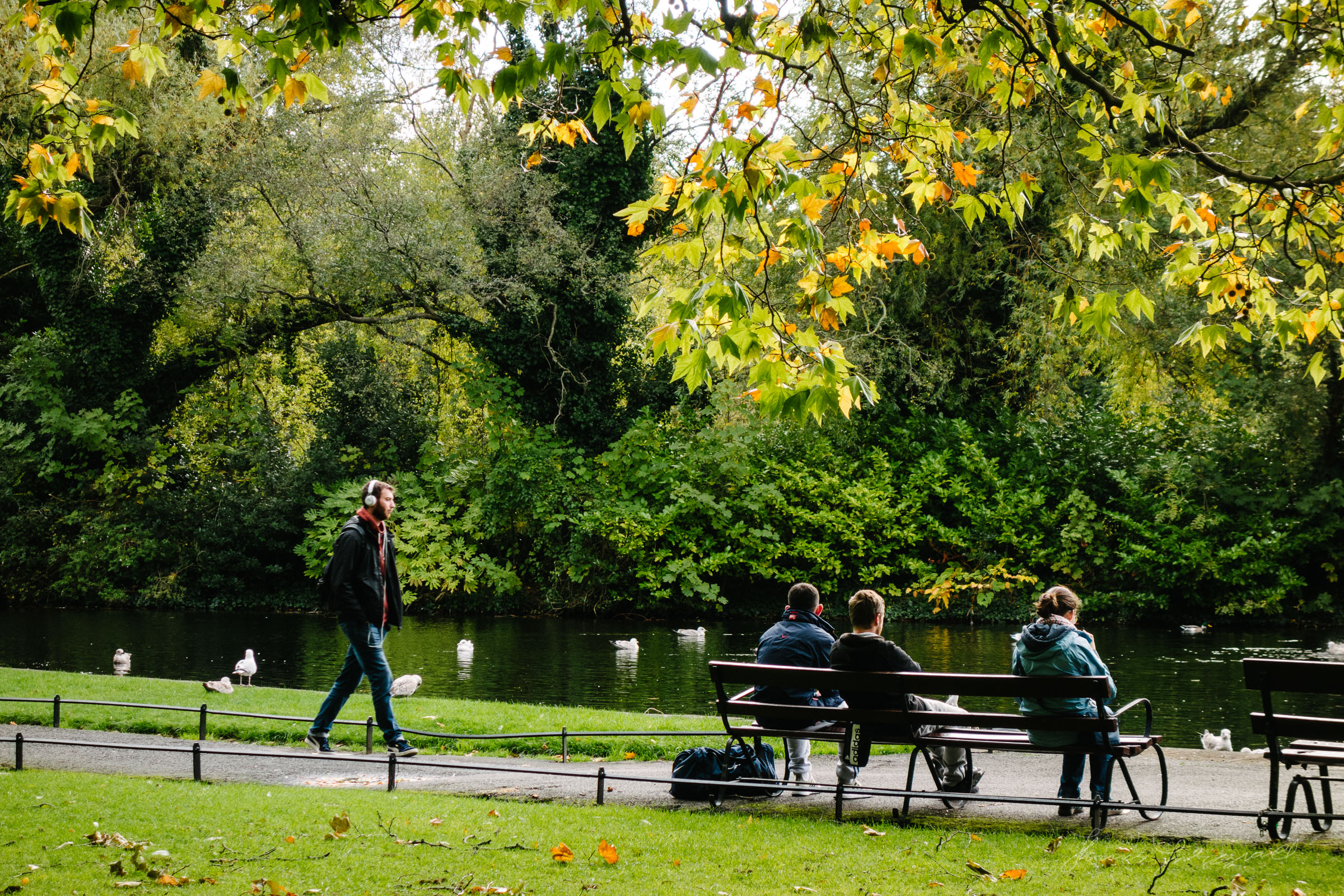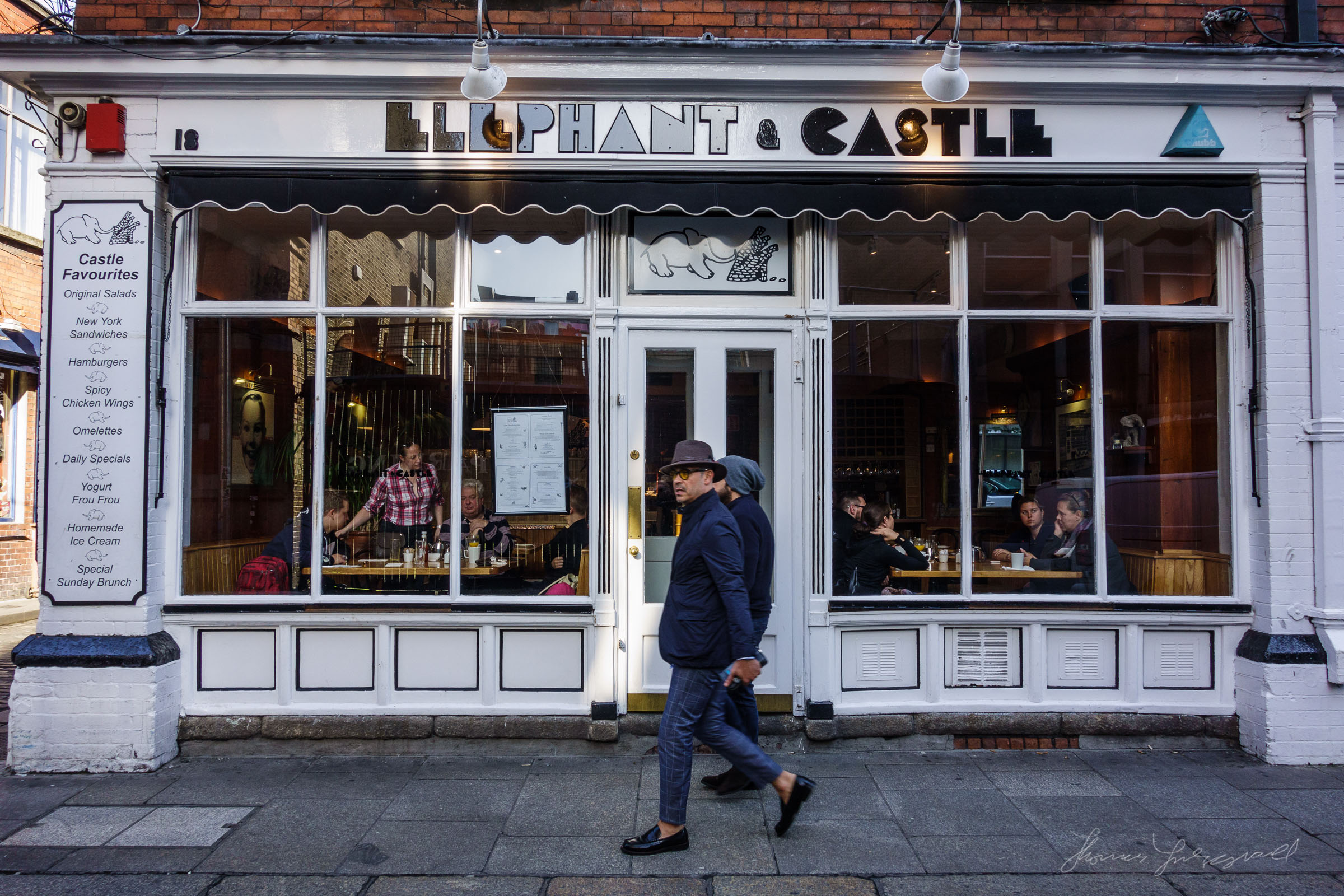Sony RX100 Retro Review
I recently had the opportunity to borrow a friend’s Sony RX100. The original RX100 was revolutionary when it first came out and I have always wanted to try one. Having used it, I can see now why it was such a game changer at the time.
The original RX100 is available online second hand for a very reasonable price now, and many places still offer new ones if you look around. The average price on eBay seems to be somewhere between €200 and €300. So is it worth it? Well, it depends on what you want and what your expectations are. If you can afford one of the newer models, it’s probably worth getting one of those, especially if you want the improved 4k video options of the newer cameras. However, given that you can get the original ones so cheaply, is it still a good camera? The answer is definitely a yes, with a few caveats.
When it comes down to it, what you’re getting with the RX100 is DSLR quality images in a tiny body. It’s smaller than the average mirrorless camera and barely bigger than a smartphone (thicker) but definitely pocketable. Until the RX100 was released, most compact cameras had tiny 1/3 inch sensors. Even the best of them was always limited by the sensor size, and the resulting images and a certain “digital” look, no matter how good the camera was. The RX100 gives you images that look a lot more like they came from a DSLR or a Mirrorless camera. Even though its a few years old, images from it still look impressive considering the size of the camera. This comes from the combination of sensor and lens. It has limitations, and its certainly not a High Iso beast, but all things considered, looking at raw files from the camera I’m really impressed.
Of course, one has to be realistic with one's expectations. There is only so much you can do with a 1-inch sensor and a fixed lens on a camera so small. It’s also worth noting that the sensor technology has improved since this model came out, but even so, it’s still pretty impressive for what it is. At ISO 200 the images are quite clean, but there is still a little bit of noise. As you increase the ISO, noise increases, and colour saturation decreases. Having said that, even up to ISO 800 the images are quite clean, and over that, they’re grainy but still useable. It maxes out at ISO 6400.
As you increase the iso settings the saturation does decrease a little, as does the dynamic range. It is noticeable, but you can compensate easily enough.
Speaking of which, the camera also has surprisingly good dynamic range, which is something you would expect to be lacking in a small sensor, but it’s actually pretty impressive. It’s not quite as good as you would get from a modern DSLR or Mirrorless camera, but it's not far off it. Raw files are surprisingly malleable, and you can process them quite a bit without a lot of degradation.
The lens seems pretty impressive for a compact camera, although at the tele end it's a bit slow. There is some fringing but it is quite minimal, especially compared to most compact cameras. At f/1.8 there is some chromatic aberration, but this is corrected both in-camera and if you’re using something like Lightroom, which supports embedded corrections. The lens does distort significantly, but again, this is automatically corrected by software, so you will never know that has such distortion. It’s only when you turn it off or use a different RAW converter that you see how significant it is. In normal use though, you will never know its there. There is a bit of flare and blooming wide open, but other than that it’s a pretty good lens considering the size.
In terms of ergonomics, its kind of a mixed bag. Controls are a little fiddly but not bad considering the size. There is an electronic “aperture ring” which is a control ring around the camera's lens where an aperture ring would traditionally go. I know it’s not called an Aperture ring, but that's what I’m going to call it! You can set the control ring to do many things, but I had it set to control the Aperture. The only downside of this is that when set as an aperture ring, it works in the opposite direction of what you would expect. It’s also a little stiff, and slow to update, but it’s a nice way of working. It could just be a little bit more responsive.
I did have a lot of images come out with a degree of camera shake. While on the one hand, this is an obvious user error, which was my own fault, but its also partly due to not being used to the way the camera works. I was relying on the Auto ISO function, which is a bit limiting. It will let you set your minimum and maximum ISO but not the minimum shutter speed. It defaults to 125sec, which isn’t enough when there’s movement in the scene. Of course, on hindsight, I should have been using Shutter Priority instead of Aperture Priority, and on my second photo walk with the camera, that’s what I did, and the images were fine.
I suspect this is at least partly to do with the lightness and size of the camera. It’s not a fault, per se, it’s a matter of getting used to it. It’s hard to figure out just how to hold it in the right way to minimise any vibration, but I had only spent a few hours with it. When I went out again and used shutter priority, I got much better results. A setting of 250s seems to be the best. Again, a lot of this comes down to not being used to it.
The screen suffers from the same issue as a lot of screens on Sony cameras. It’s too dark. It’s not just a screen brightness issue, as you can adjust the brightness, but it seems to be at least partly to do with the way Sony displays the live view image on the screen and the gamma used. It can lead to making you think the image is underexposed, and then you may overcompensate. The best option I found is to use the “Bright Sunlight” mode, which turns up the brightness and alters the colour balance of the screen (not your images) Doing this makes it much more usable, and a more accurate representation of what your final image will look like, but it can blow out the whites a bit, and in some cases have the opposite effect, where it looks like your images are overexposed.
I have the same issue on my A6000, and I’ve also seen it on the A7 series. Even though this camera is several years old now, this is an issue that I’ve seen across all Sony cameras, and I’ve seen other people complain about it too. On my A6000 I get around this by using the EVF as much as possible, but as this doesn’t have an EVF it’s more of an issue. To be fair, you would get used to it and learn to work around it. It’s not awful, but compared to the LCDs on other cameras, especially more modern ones, it’s a bit of a letdown, and the same can be said for all of Sony’s cameras.
The video on the original RX100 is fairly good, but not great, especially compared to the newer models. It depends on the shots you take really. They can be a little soft if there’s a lot of detail, and the biggest issue is the compression. It’s using a relatively low bit-rate AVC-HD. Apart from the fact that it is only 1080 compared to 4K on the newer models, it also has some limitations on the format. For a start, it only has two options. 50i or 50p. There’s no 25p. Some documentation says that the 50i mode is just 25p in a 50i wrapper but this doesn’t seem to be the case. There’s movement between the fields, so this seems to imply true 50i. If you record 50p it’s using a slightly higher bit-rate, but because the frame rate is double, it's actually lower per frame and looks more compressed than using 50i. I’m pretty sure this changed in subsequent models (apart from the addition of 4K and S-LOG, but its a pity because otherwise, the video quality wouldn’t be too bad. There is a little bit of aliasing and moiré, but not much, and the image is can be sharp depending on the scene. I find that closeup shots, are generally sharp, but wider, landscape type scenes tend to be a bit soft, which may well be more to do with the compression than anything else. The stabiliser is great on video too. It’s really smooth and gives your video a steady cam feel. It’s not as good as a gimbal of course, but for vlogging and so on, it’s not a bad option.
I shot a range of subjects while testing it out, from landscape type shots in the park to street photography, to architecture. It’s kind of funny, but when shooting street photography, I actually felt more self-conscious shooting with this than I do with larger cameras. It’s possible that I was feeling this way just because it’s not mine and I was being careful, but it’s so small, that it almost feels like you’re trying to hide something! I’m sure that sensation goes away once you’re used to it, but I thought it was funny.
Overall, it’s a great little camera, if a little fiddly, with my biggest issue being the screen, as it is with all Sony cameras, although that’s partly me being picky, and is not a deal breaker. If you can pick one up for around €250 it’s definitely a great bargain for that price. And while you can pick up several mirrorless cameras for around that now, most of those don’t have a reasonable quality zoom lens. Still, if you want a high-quality compact (very compact) camera, it’s a good option, if you can pick one up cheaply. Having said that, there were so many improvements to newer models, that if you can afford one of the newer ones, it would be worth the extra, especially for the improved video and EVF. I did enjoy shooting with it though, and I was surprisingly impressed by the quality of the results.
Help Support the Blog
I’m now on Patreon. If you like what I do here and find the information useful, then you can help by supporting me on Patreon. As well as helping keep this blog going with even more useful news, tips, tutorials and more, members also get special Patreon only perks. Stop by and check it out.
If you like this post then you can see more of my work on Instagram, Twitter and Facebook. I also have a YouTube channel that you might like. You should also check out my other Photography Project: The Streets of Dublin. If you want to get regular updates, and notices of occasional special offers, and discounts from my store, then please sign up for the Newsletter.
You can also show support by buying something from my from my Digital Download Store where I have Lightroom Presets, and e-books available for download. If you're a Fuji X-Trans shooter and Lightroom user, check out my guide to post processing X-Trans files in Lightroom. I also have a guides for processing X-Trans files in Capture One and Iridient Developer. For Sony Alpha shooters I have a new guide with tips on how to get the best from processing your A6000 Images in Lightroom.



































